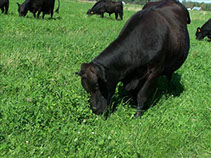
I wish I had taken pictures of my new pastures 2 weeks ago. We just took off the second hay crop from those fields and they were BEAUTIFUL…Even my neighbors were stopping to say ‘Your hay sure looks good’. Big tall grasses with tons and tons of big heads of clover with huge leaves. It was a very pretty sight. Went across the fields with the water and just turned the cows into one of the fields yesterday. They’re in ‘hog heaven!’. So full they won’t even go to water…they go drink out of the sprinklers!!! Big lazy fatsos!
I have one more field to do this next spring at the home place and one more at my other place, then we’ll have SucraSEED totally on both places. I’ll send some pictures of the big fat cows and calves. We are SOLD on this grass seed!
Judy – Milton Freewater, OR
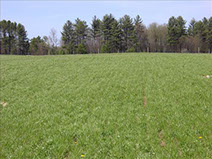
AberDart HSG has survived for three years now in the upper peninsula of Michigan! It appears that the key to winter survival is to maintain a minimum of 3 inches of stubble heading into winter and then make sure to wait a little while after Spring growth begins before grazing. It seems that the HSG varieties are one of the first grasses to start growing and as a result people turn the animals in to graze before the plant has been able to restore the carbs consumed over the winter.
“I rated the High Sugar Ryegrass stands today and looks pretty good. I was surprised to see these High Sugar Perennial Ryegrasses survived the third winter here in the UP. Amazing!”
Dr. Doo-Hong Min Michigan State University
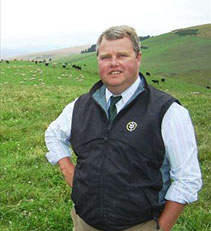
The lack of persistance seen in some new ryegrass cultivars is the result of an over emphasis on drymatter yield in their breeding. “Farmers are saying the new grasses don’t last like the old varieties and I agree that it appears some seed companies have tried to further increase drymatter yield for a marketing edge but have not managed to retain persistency traits,” says David Kerr of Germinal Holdings NZ Ltd. Mr. Kerr said the Aber High Sugar Grasses have proven to be reliable and are the result of a 30 year programme where the focus is on herbage quality, drymatter yield and high levels of persistency.
He recently visited a sheep and beef farm where AberDart (used in SucraSEED) is seven years old and despite the climate, kikuyu and insect challenges the HSG pastures have grown strongly through a third consecutive drought. Mr. Kerr said the HSG’s dense roots and numerous tillers were the product of breeding for persistency against frost, heat, drought, UV light, numerous fungal, viral and bacterial pathogens, a wide range of invertebrate pests and hard grazing.
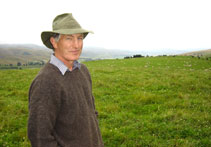
It can blow from every direction and we can still miss the rain. The ground freezes in winter and the hills rise from 600 metres to 1,000 metres above sea level. There is a real determination to improve pastures. Different ryegrass cultivars have been tried for more intensive grazing and so far the HSGs with clover initially sown into the 10ha paddock is showing the most promise. We had 330 small lambs on the HSGs after weaning and then calves again three weeks later and they had all blown out incredibly. The lambs went in at 18-22kgs and eight weeks later we took the tops out of them at 36kgs, so they did put on incredible growth and almost caught up with the middle mob. If you can finish them on grass and don’t need to feed them on a short-term forage crop then that’s a real cost saving.
Robert Hobson, Nimrod Farms NZ
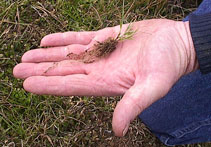
Don Wilkinsen of Pasture Proper, a grass fed co-op in Idaho, has been impressed with root system of the HSGs.
The SucraSEED fields were the first to green up coming out of winter, and the livestock sure show a preference for it. Photo was takenFebruary ’09 on Bill Gale’s farm.